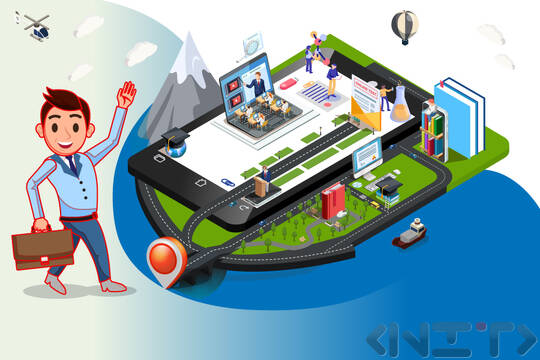
Hiring a new employee and entering the new job is a complex process for both parties: the Employee and the Employer. On-boarding, or also known as organizational socialization, is the process where new employees are emotionally, physically and professionally integrated in the new organization.
The on-boarding is much more than a marketing video message from the CEO, touring of the offices building, and knowing how to allocate the fire exits. An e-learning program that is specifically designed for onboarding purposes can significantly improve employee engagement, and loyalty, as well as accelerate the orientation and induction into the unique culture and value system of the company. This is a complex task; which impact is often neglected and underestimated.
The statistics show that almost one third of the employees resign within the first year of employment. Furthermore, 22% percent from the staff turnover happens within the first 6 weeks of employment. That should give enough “food for thought” on what can be done to turn around these negative trends. Looking at the statistics it's not that hard to calculate the negative impact and financial losses when an employee decides to leave the organization within their first months after they accepted the job.
The most effective orientation and induction programs require time and money since they aim to support and deliver a long-term plan. The best on-boarding programs are those who embrace the concept of a two-way process during the induction process. These programs should also take into consideration that a recently hired employee will evaluate and benchmark how well the promises made during the recruitment phase represent “the reality.” Hence, the onboarding should validate that the recently appointed employees have made the right decision and share a long-term view for the organization.
Conduct an employee survey. Hear the real “voice” of your employees
The most useful approach is to conduct a survey among the permanent employees. Assess what has contributed to meeting their expectations, whether they were left with unanswered questions or felt disconnected in the first few days of joining the company. The information gathered will serve as a true “gold mine” to improve the induction process. To define the problem in line with the needs of your audience, please download our project planning template.
Most often, the on-boarding program in small companies is not clearly planned and is dependent on the good will and availability of your colleagues, supported by instruction book or an induction course. The challenge here is that the success of the on-boarding program for new employees is dependent entirely on the previously hired colleagues and their availability and busy schedule. The induction process is therefore ad hoc and brings the risk of inconsistency and missing important points. Large organizations conduct and plan their on-boarding events couple of times a year. However, the challenge is that the newly hired employees are left to work “on their own” for a certain period of time.
Use an online approach in the on-boarding process by developing e-learning induction program. What are the benefits? There are plenty of them!
Employees get access to the entire content instantly, without depending on other colleagues’ busy schedules. Every employee receives portions of the required information in a systematic and logical manner. The information about new employees can be easily updated and modified meaning it will be always relevant. There are no ongoing and recurrent costs for lecturers, travel or equipment. Access to training is only available when all requirements are met, and the person is hired.
If you are a company with offices in multiple locations, imagine how many people you need to onboard a year, and not to mention the different time zones!
It looks like the e-learning solution now makes perfect sense
What kind of information to share with the newly hired on the very first day? Probably it is best to include essential information with regards to location and navigation across different sites inside the organization. For example – where the administrative offices are, the meeting rooms, the office canteen etc. It is also very important to meet and get to know the team. You could introduce the new employee with the internal LAN.
A short welcome message from the Executive team is always a great idea, so is the face-to-face meeting with the Direct managers. It would be beneficial to introduce clear guideline on job mandate and job description in order to manage expectations and meet timelines. Questions related to performance assessment and rewards and remuneration should also be answered. Most important processes related to certain tools or software should also be clarified.
It will be good to incorporate interactive scenarios; role plays and simulations into the e-learning onboarding program.
Other topics that are usually covered with the first week are related to company’s history and future strategy. This could be presented through an interactive timeline highlighting key milestones and achievements. Sharing this information creates a sense of belonging and affiliation with the company. The organization values and culture should be well articulated and brought to life with examples. You should be careful not to take a long list of instructions and rules on how to work in the company and live. Instead, you can easily showcase how the unique company values are the once that make your organization a “great place to work”.
A simple indication indicating mandatory actions as well as additional activities that are "recommended" will make the induction process easier in the first days
NIT - New Internet Technologies Ltd. is experienced in applying the e-learning approach to on-boarding programs. We have developed e-learning for BNP Paribas Personal Finance. The e-learning shows in visual way the steps the new employee takes in the company in the form of an interactive map. The gamification element makes the e-learning more engaging and memorable. This enhances the motivation of the new employees and builds the positive image of the company.